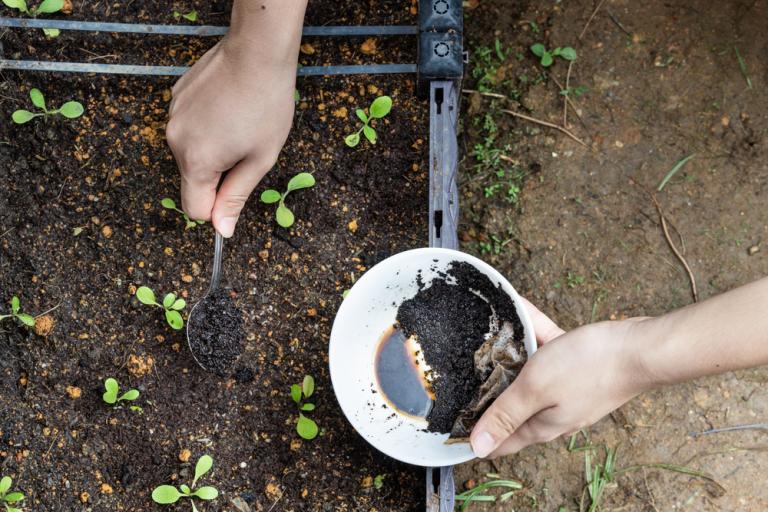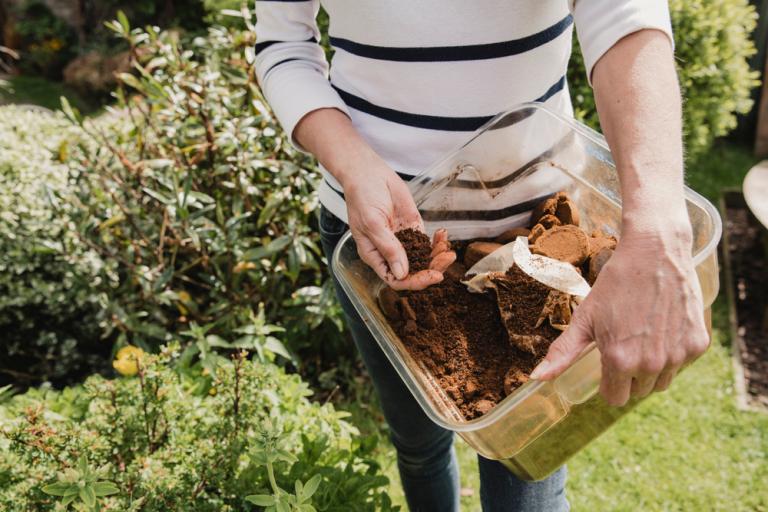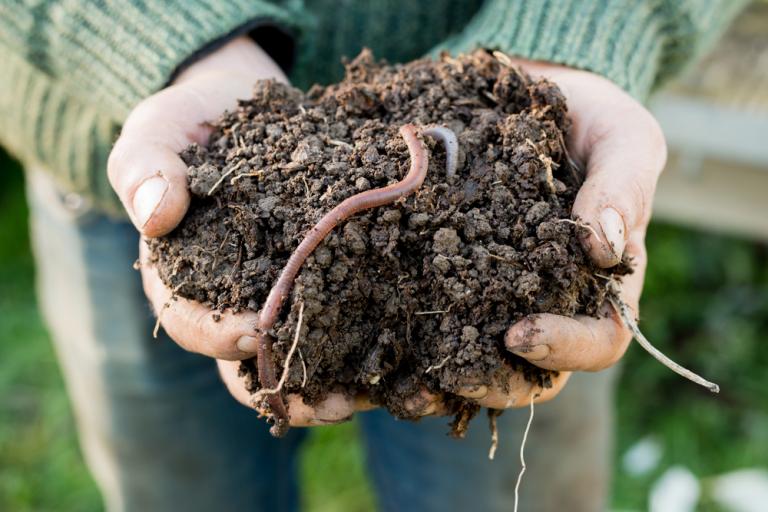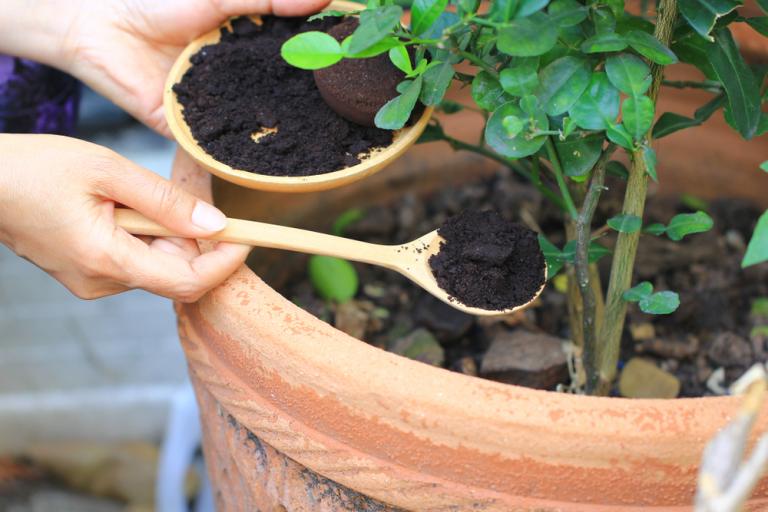Coffee grounds are a natural fertiliser and a cheap source of nitrogen, potassium and phosphate.
A lack of potassium in plants can often be identified by yellow, discoloured and weak leaves. Before adding to the base of your plants, let the coffee grounds cool down and dry out completely overnight by spreading them out on a baking sheet lined with paper towels, otherwise, the moisture can encourage mould growth.
The grounds have an acidic pH value, so only occasionally add them to plants that tolerate it well. Rhododendrons, angel’s trumpets, hydrangeas, blueberries and roses will be the most grateful for it.

Coffee grounds in compost
Put coffee grounds in your compost bin. There are two types of compost material: brown and green. Your coffee grounds may be brown in color, but in compost jargon they are green material, meaning an item that is rich in nitrogen. Coffee grounds are approximately 1.45 percent nitrogen. They also contain magnesium, calcium, potassium, and other trace minerals. Other green compost materials include food scraps and grass clippings.
Adding coffee grounds and used paper coffee filters to your compost will provide green compost material. However, it must be balanced with brown compost material, which includes dry leaves and newspapers. There should be a 4-to-1 ratio of brown compost material to green compost material. If you have too much green material your compost pile will start to smell. If you don't have enough, the compost pile won't heat up.

Fertilise with coffee grounds
Add coffee grounds directly to the soil in your garden. You can scratch it into the top couple inches of soil, or just sprinkle the grounds on top and leave it alone. In smaller amounts, especially when mixed with dry materials, coffee grounds will give up their nitrogen. Used coffee grounds are actually nearly neutral in pH, so they shouldn't cause concerns about their acidity. Be careful not to use too many coffee grounds or pile them up. The small particles can lock together, creating a water resistant barrier in your garden.
You can also make coffee ground "tea." Add 2 cups of used coffee grounds to a 5-gallon bucket of water. Let the "tea" steep for a few hours or overnight. You can use this concoction as a liquid fertiliser for garden and container plants. It also makes a great foliar feed you can spray directly on the leaves and stems of your plants.

Feed your worms
Add coffee grounds to your worm bin every week or so.
Worms love coffee grounds! Just don't add too many at once, because the acidity could bother your worms.
A cup or so of grounds per week for a small worm bin is perfect. In addition to using coffee grounds in your worm bin, earthworms in your soil will also be more attracted to your garden when you use them mixed with the soil as fertiliser.

Fresh coffee grounds for acid-loving plants
While used coffee grounds are only slightly acidic, fresh (unbrewed) coffee grounds have more acid. Your acid-loving plants like hydrangeas, rhododendrons, azaleas, lily of the valley, blueberries, carrots, and radishes can get a boost from fresh grounds.
However, tomatoes do not like fresh coffee grounds; keep them out of that area of the garden. This could be a good use for coffee that is getting old in your pantry or a type you bought for visiting friends but isn't your usual choice.
Fresh coffee grounds still have most of their caffeine content as well as the acid. Don't use coffee grounds on seedlings or very young plants, as caffeine can stunt their growth. Be cautious in using fresh grounds around pets or your wire terrier may become extremely wired.
Collect your free coffee grounds from any Blue Diamond Garden Centre restaurant or cafe, free of charge.


